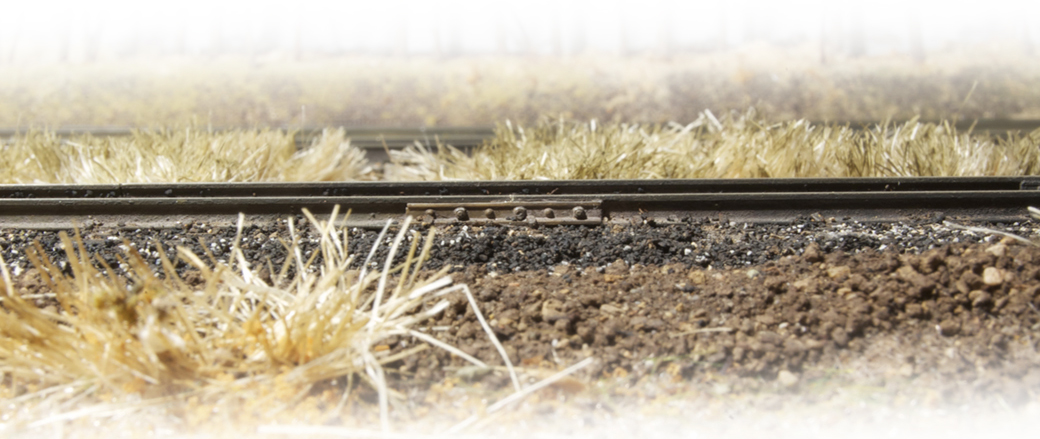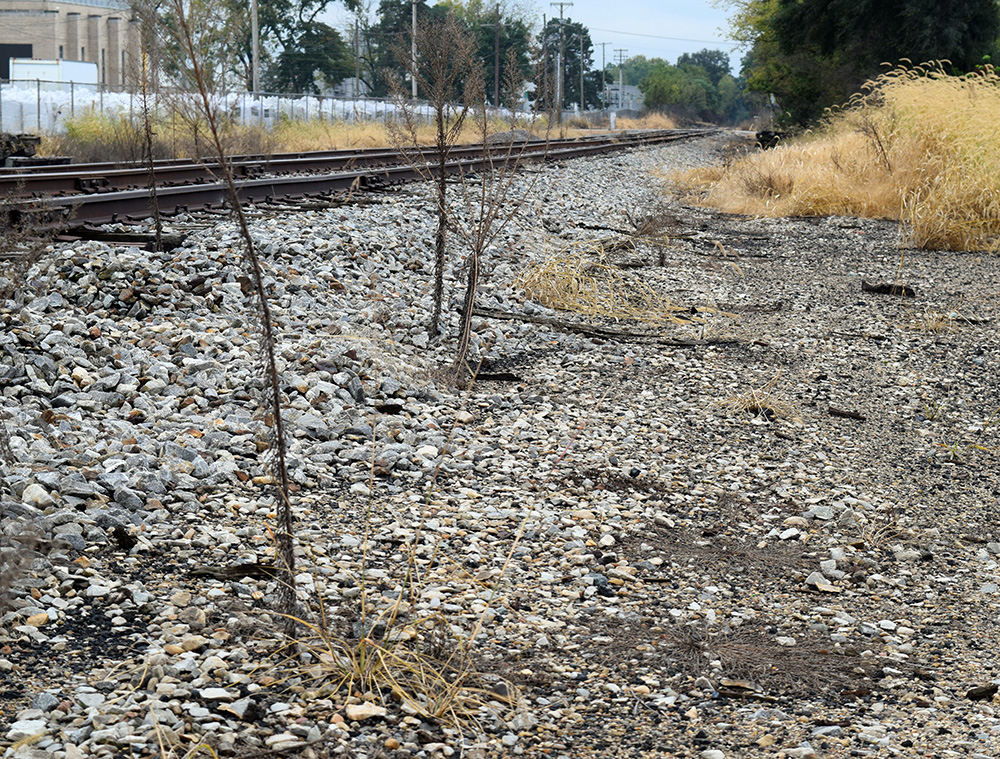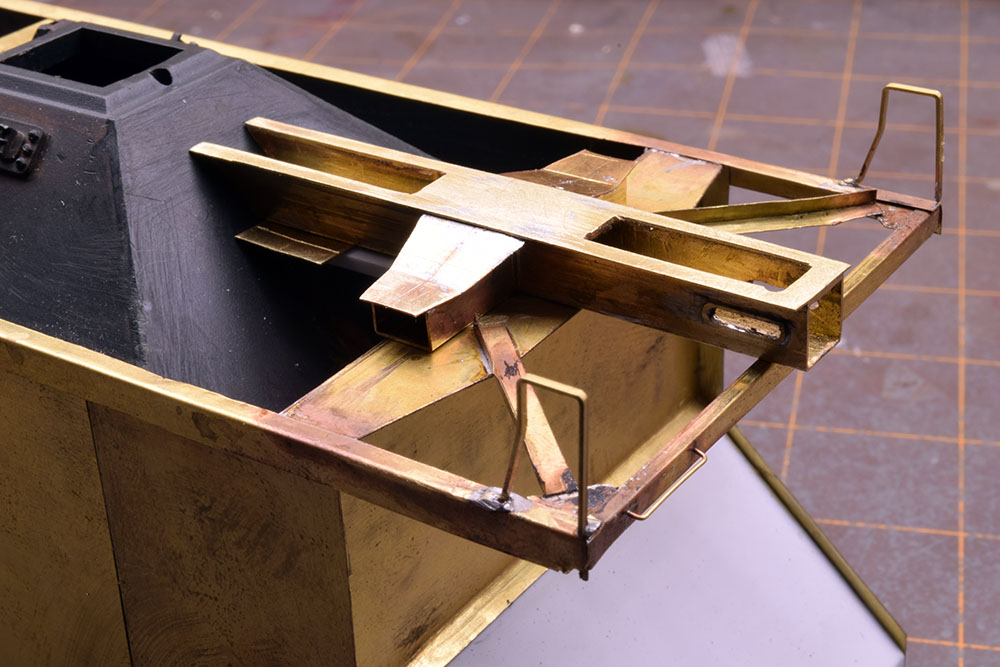
Artistry and Craft
Artistry Is More Than How Things Look
I come from a tradition in the fine arts that values original thinking and developing a singular vision for the work. This tradition has had a strong influence on my thinking in recent years as I started bringing more of those values to my modeling. I see and approach model building as a craft, one that can be as demanding and encompassing as any other. I believe that a person not only develops their skills and knowledge of a craft but that the craft also develops the person as they practice it. If a model has an integrity and grace it’s because the builder found those qualities inside and imparted them into the work. I’ve learned that the real question is how much depth of emotion toward the subject are you willing to reach for and express in the work? I believe there is an opportunity that is being squandered by only focusing on a narrow range of potential with model building. I’ve learned to look beneath the surface to discover something good and worthwhile to bring into my life.
Like much creative work, there is an intention and choice involved. Looking at a scene for a layout I’m more interested in capturing the essence of a place and the emotional bond I have toward trains in some way. As with composing a landscape painting, there are things to emphasize and others to edit out. It takes time to get to the core of a thing, to understand a location and what I want to say about it. I take a similar stance toward model building.

Craft
In my view, building a model such as a freight car is like painting a portrait. I want to know the subject as well as I can and represent it truthfully. I believe the compromises carried over from toy trains are often unnecessary. I see them as distractions that take away from the subject. At the workbench, I find a deep satisfaction from working with tools and materials. There’s the feel of the tool in my hand and the rhythm of the work. Shaping a part, fitting it to others and seeing how the pieces come together and make the whole never gets old. The work shows my shortcomings; it reveals my impatience and, when I let it, my undiscovered strengths. It teaches me discipline and how to see. This craft shows me who I am and who I might become.

My overarching philosophy is to bring artistry and craft to modeling. I’m fully aware how different my thinking is from the mainstream and, painfully aware of how few people truly understand the value of this idea. Consider though that we’ve reached the point where one can have virtually anything in terms of product and that how-to information is practically a free commodity online. Where do we go from here? The technology will continue to advance yet we treat the medium of model trains as if it’s still the 1950s. Looking beyond the layout and consumption mindset where are we going with this craft?
An activity as creatively diverse as model railroading deserves a grown-up conversation and means of explanation. How does one move beyond the dry mechanics of the technical and share the emotional bond in a way others may connect with? Over the next few posts, I will unpack how I apply the principles of artistry and craft more completely. However, I’m not here to change anyone’s mind and, unlike other voices, I’m not suggesting you’re doing it wrong if you don’t follow my definition. I’m writing to suggest a different perspective of what this craft could be for people who are willing to look beyond the usual ideas. If that’s you I hope that you find something you can use in your work.
Regards,
Mike
The next post on January 20 covers the topic of drawing as a way of understanding a subject. See you then.
“This craft shows me who I am and who I might become.“
Oh gosh. Oh golly gosh.
That’s both immensely self-empowering, and massively humbling.
That’s a powerful, liberating and empowering combination.
Be warned: finding out what you might become can be scary, and is not for the faint-hearted. Significant achievement is quite daunting, as the next model has to be at least as good, if not better. As an artist, you will be familiar with this, but for many, this may be a culture shock…
Happy New Year!
Hi Simon,
Experience teaches me that not everything coming off the bench will be acceptable. You want to strive to make each model better with the knowledge that there will be mistakes and flubs aplenty. This is normal and to be expected. I’m also a fan of practicing old and new techniques on scrap material as a low risk way to improve. Artists sketch and musicians practice to keep their skills limber, so why shouldn’t we? Unfortunately, with limited time and a relentless desire to make tangible progress on too many fronts, practice for its own sake is rare. I will cover this more in a future post.
Mike
Artists sketch and musicians practice to keep their skills limber, so why shouldn’t we? Unfortunately, with limited time and a relentless desire to make tangible progress on too many fronts, practice for its own sake is rare. I will cover this more in a future post.
I had never thought of that, despite being able to play a musical instrument.
I look forward to your post with eager anticipation!
Now that I’m finally back to working on a layout and a layout that feels viable I find myself having a conversation like the one you described. Last night, I couldn’t sleep so was up most of the evening and looking to busy my anxious self I set to working on the layout and jobs to work on that I could quietly engage with during the late night into the early morning. For the first time since starting this project I looked critically at what I had accomplished and what I still had to do. Naturally there were questions regarding certain elements and how I’ll approach each of those as work and I also looked parts that I’m unsure of. I discovered an insecure reaction in myself because I’m unsure of what I’ve done. In that interrogation I felt like I was analysing my work as the artist should. I don’t need my work to look like another modeller’s as a measure of right or wrong. Instead, if another’s interpretation is like a tool in my kit then my comparison is because I like what they did and think it could be an equally effective voice to breathe agency into my idea. Comparing my work either to another modeller’s or the real thing I found myself returning to the same point: do I actually know what I think I do about what I’m trying to interpret? My answer was: “I’m unsure”.
The hobby advice is always “just study what’s there and then divide by 87 or whatever factor your chosen scale is” but I don’t think that works. I don’t think I want something that aloof. What we want is what it means to us when we see the real one. Not “are those grab irons the right size” but “what is it about the way the exhaust stains the red paint that I really connect with”?
That’s what the artist’s vision can help us with. Learning to see what’s really there not just what we think is there or worse what we think we saw back when we looked at it. Not just what does it look like in pragmatic terms but what do we see.
And, in my conversation with myself I also understood that, part of the evaluation, is that in my current work I’m trying to be ignorant of “the advice” and instead work based on my creative instinct. However, the insular nature of that only amplifies a refined understanding of my vision and the work I’m attempting to sculpt in this mixed media presentation that I call Coy.
Chris
Hi Chris,
I have to remind myself how strange and alien these ideas sound to a hobby that reduces the creative process to a formula and collection of techniques (the advice as we both refer to it). Such formulas work well to produce a functional layout but fall short at capturing the intangible qualities that we seek in our modeling.
As your own design experience teaches, the ambiguity and second guessing you feel is normal and expected. Each new element you add to your scene impacts the perception of the existing ones. Going slow and considering each new addition thoughtfully in terms of its visual impact and storytelling nature is the way to go. What to leave out is as important a decision as what to add.
Comparing my work either to another modeller’s or the real thing I found myself returning to the same point: do I actually know what I think I do about what I’m trying to interpret? My answer was: “I’m unsure”.
This is another aspect the advice doesn’t prepare us for. When copying, we have a known standard to benchmark against: the other’s work or the actual object. When we seek an original interpretation, the success or failure of that rests squarely on our shoulders. We communicated our intent or we didn’t. The pressure to conform to existing standards is relentless. In my experience the greatest struggle in any creative form is in developing and staying true to your own unique vision in the face of a culture that doesn’t understand or appreciate it. In a way, that what anyone who colors outside the lines of this craft does.
I appreciate you sharing these insights into your design experience with the layout. Since it occupies the shared public space in the house, you have an opportunity to elevate the modeling and presentation beyond the norms. In that regard, it only has to please you and Krista.
Cheers friend.
Mike
Mike, your reply just triggers an explosion in my imagination.
Because my layout lives here in the home with the rest of us and the rest of our lives my design decisions are always functional through that context. This affects everything within the envelope since it creates moments like this: I can see my layout out of the corner of my eye when I’m preparing food to share with my family. No artificial colours and flavours in the kitchen so why did I build a model railroad that celebrates them? For example: as a vegetarian (albeit one with very loose morals when it comes to cured meat, sorry) I can’t create a layout where the major industry is a slaughterhouse because what’s not right on my plate isn’t right on the model railroad either. I guess it’s a question of consistency.
Model railroading is, for me, a toolset to allow me to reconcile my identity. Not my identity as a model railroader but as a person. Because I use the hobby in this way, to interrogate the human condition, I feel like I am the artist using the medium of model railroading to explore a story of life by interpretation using mixed media sculpture. Humility guides me away from considering what I create as art but, equally, I believe that I approach this as an artist. I think that piece of identity to be true because I feel connection when my model railway design decisions connect are a function of creative needs over strict prototype replication (i.e. what I see not what was there even though both are the “same” thing). I’ve been working on analysing the hobby as craft by that same lense. There are tools and techniques that produce beautiful models that I really enjoy looking at but I know I don’t enjoy doing or using. As an artist I can avoid that conflict and guide my work toward subjects that don’t invite them into my creative space.
Anyone who knows me knows I like model trains and real trains too. It’s too ambiguous to relate that interest in such simplistic terms and I wish there was a way for people to see what it is that I like (I like grassy right of ways and railroading on an individual human scale but don’t find classic streamliners of much interest; so not trains but “these” trains). I continue to try and use model railroading as a platform to relate that vision. As you say, what to exclude is as important as what to include. Exclude not because a structure is too large or there’s not enough room for all the tracks in the yard but exclude noise that only distracts from the story. Include not because it passed the test of what fits in my space but looking at what to include, understanding its role in the story, and asking it how it should be included so that its purpose in this story is clear. A composer knows when to quieten a part of the orchestra and I’m trying to transfer that from a place where it’s obvious what to do to a place where we’re not used to considering that perspective at all.
As artists we understand the identity is an evolutionary one. We’re not artists but are becoming artists. We employ craft as a propellant to move us toward artistry. Our output is evidence of our attempts to direct that rocket in a forward direction. These things are no more synonymous (art or craft) as track planning or layout design and yet our newborn hobby language hasn’t been challenged to evolve in a way that would allow us to understand why they’re different. It warms my heart and lets me feel less alone when I read what you write here. This extends the potential of the hobby beyond the popular realm that favours rules and literal interpretations. The hobby seems to alternate between the binary of literal to completely fantastic but this conversation lives in the middle by charging work that is individual and unique to our experience. It provides a place to express our identity.
Brilliant thread Mike. Thank you for hosting this conversation – this is a gift I so completely appreciate.